#Mount Ono
Note
One of my favorite things about Horikoshi is that he at least makes his female characters different shapes if u know what I mean?? Like some of them have big boobs and some of them have small boobs and some of them are thick and some of them aren't and they're all different sizes and I think that's pretty cool. He has his flaws but I do like that about him and his girls. I kind of hate that the anime made them skinnier and made their boobies even more.... Boobey
yeah but it frustrates me too because we can SEE he’s capable of drawing all kinds of body types (not just women, his shape language is rlly rlly good in general) but he tends to stick to his personal type like brooooooo!!!!!!!
#I love how he drew Cathleen she’s so buff!! And I think that body type wooldve made sense for mount lady but no she has to be sexy 😑#Her hero alis is ono let her be big!!#asks
76 notes
·
View notes
Text
Here are comments from Ryohgo Narita (original work author), Shinta Fujimoto (original work illustrator) and Manabu Ono (director / series composition) on the upcoming anime adaptation of Dead Mount Death Play, in that order, as shared on the official anime website (c.f. Staff section):
原作 成田良悟 アニメ! アニメです! この発表を行えた事を本当に嬉しく思います! デビューして20年という節目に、デッドマウント・デスプレイがアニメという新しい世界へと転生できたのは、 一重に読者の皆様から頂いた加護のおかげです! この作品がどのような成長を見せるのか、どうか末永く見守って頂ければ幸いです……!!
原作 藤本新太 自分が関わった作品がアニメ化するのは初めてなので嬉しいです! ここまで応援してくださった読者の皆様ありがとうございます! 動いたら見栄えするだろうなと思うキャラ、声で聴いたら楽しいだろうなと思うセリフ、 一視聴者としても楽しみにしています。
監督・シリーズ構成 小野 学 先日人間ドックにて初めて胃カメラ検査を受けました。 鼻からカメラを入れられた時は「絶対に無理!」とモノローグで叫びましたが、 モニターで見る自分の食道や胃の内部映像は 「デッドマウント・デスプレイを作る上で大変参考になる!」と苦しみの中で思いました。 お祓いも受け、人間ドックの結果も良好だったので ショッキングな画作りもアクションもホラーも全力で頑張ります!
My dubious interpretations of the machine translations are under the cut (plus a bit of context and deprecating questions about word choice). I defer to Japanophones for better translations.
I am quite appreciative of Narita's explicit appreciation for this anime happening in the 20th anniversary of his debut. Meanwhile, I didn't appreciate enough until now that the DMDP anime will mark the first time something of Fujimoto's has been animated. That's even more reason to wish for the anime's success.
Context for Narita's comment: DMDP is a reverse isekai in which a protagonist reincarnates in someone's body in Shinjuku, Earth (another world). Narita is playfully invoking this premise.
Original Story Ryohgo Narita Anime! It's an anime! I am very happy to make this announcement! It's been 20 years since I made my debut, and the fact that Dead Mount Death Play has been reincarnated in the new world of anime is due in no small part to the blessings of our readers! I hope you will follow the growth of this work for many years to come.......!
Fujimoto context: Prior to DMDP, Fujimoto collaborated with Narita on a 2010s Baccano! manga. Prior to that, he wrote and published his original manga Red Raven, his most representative work.
Original story Shinta Fujimoto This is the first time a work I've been involved in has been adapted into an anime, so I'm very happy! Thank you to all the readers who've supported me this far! I am looking forward to seeing the characters in action and listening to the dialogues that I think will be fun to hear voiced. As a viewer, I am looking forward to seeing it.
Translation ??? on below: I cross-referenced several machine translation iterations, tweaked them w/the machines, and then took liberties in (re?)phrasing the whole bit about Ono screaming, seeeing the images, and thinking about DMDP for readability. I think the gist gets across, but I admit it doesn't quite reflect how Ono phrased it. JP doesn't have a strict sentence order, so... Eh, you get my gist.
Director/Series Composition Manabu Ono The other day I had a gastroscopy for the first time at a thorough physical examination. When the camera was inserted through my nose, I screamed, "Absolutely impossible!" in a monologue upon seeing the image of my esophagus and stomach on the monitor. "This will be a great reference for making Dead Mount Death Play!" I thought, in the midst of my suffering. I had undergone a purification and the results of my physical exam were good. I will do my best to create shocking drawings, action and horror!
Me again. W.C. for 画? Paintings? Pictures?
#Dead Mount Death Play#DMDP#DMDP anime#Ryohgo Narita#Shinta Fujimoto#Manabu Ono#inexqueuesable#I am not qualified to do this.#Mission: 'demonstrate that adaptations of Narita's original works are profitable in 2023' πάμε πάμε#demonstrate that Narita can be profitable πάμε
4 notes
·
View notes
Photo
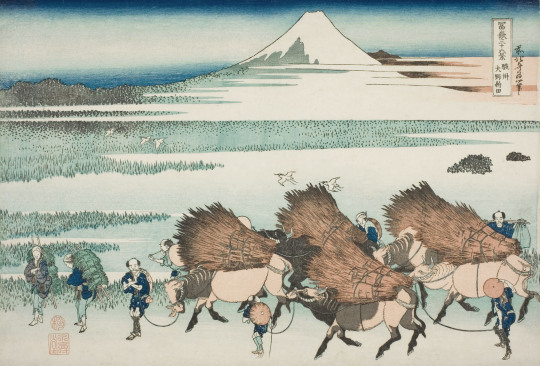
Katsushika Hokusai, Rice Paddies at Ono in Suruga Province (Sunshu Ono shinden), from the series "Thirty-six Views of Mount Fuji (Fugaku sanjurokkei)", 1825
128 notes
·
View notes
Text


Two sets of neighbors sharing the same name!
The top photo caught my eye because I thought it was neighbors called Moka and Soka, both of which would have been *very* unusual. But it's just 岡 Oka, first initials M. and S. It means mount, hill, or knoll. It's read おか or コウ.
The bottom name is 小野, usually read Ono but possibly Kono, Onu, or Sanu. It's actually how Yoko Ono's family name is written. 小 means little or small, and it's read ちい.さい, こ, お, さ, or ショウ. And 野 usually means plains/field, but it can also mean rustic or civilian life. It's read の, ヤ, or ショ.
These are both duplexes, but it's not uncommon (at least near me) for multiple generations of family to live in neighboring houses—maybe larger estates that were broken up into multiple properties? Looking at this, I feel kinda bad for the mail carrier of the two Ono households, but maybe they have only one mailbox and he doesn’t have to worry. Or maybe the family is happy to sit around at the end of the day and sort out whose all mail is whose. It’s one way to bond.
56 notes
·
View notes
Text
Let's Introducing, Guest characters of M27
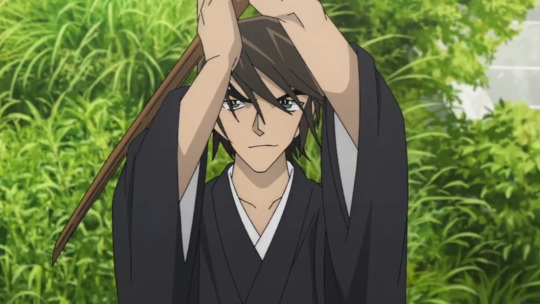

Fukushiro Hijiri
The son of swordsmith Fukujo Ryoe, a university student. The opponent that Heiji must face, he has Iaido, and he seems interested in Kazuha.
Fukushiro Ryoe
former swordsman Hijiri's father is seriously ill but has deep knowledge of ancient swords.
Akie Takuso and Akie Keisaburo
Twin brothers who serve Bryan Doing dirty work like murder "Merchant of Death", his swordsmanship is vicious and dangerous.
Brian D. Kadokura
Japanese-American man known as He is known as the "Merchant of Death" and works as an arms dealer throughout Asia. Ready to kill anyone who gets in the way of the treasure hidden in Hakodate. and is behind the murders that occurred around Hakodate.
Yoshinaga Miko
The shrine keeper on Mount Hakodate The one who holds the secret of Hoshiro's sword.
Hijikata Tojizo
Real figures in the history of the Shinsengumi Who sacrificed their lives to protect the five-pointed star sword and priceless treasure in Star Fortress Goryokaku Hakodate.
Nishimura Kyouhei
Hakodate police who met Conan, Ran, and Kogoro in the episode The North Star No.3 Express Leaving Ueno, originating from Ueno At that time he was called Inspector Nishimura.
Yoshihisa Kawasoe
Assistant Inspector Nishimura People who are clumsy and have no discipline in traffic. But he is well-versed in Hakodate's ancient treasures.
Onoe Takuso
The current leader of the Onoe capitalist group. The person who received the Thief's message and the beginning of it all
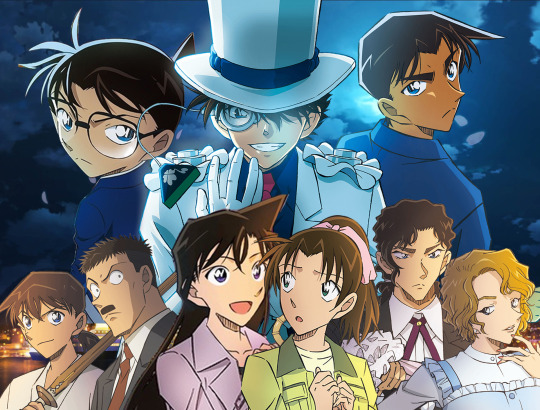
The film is scheduled to be released in Japan on April 12, 2024.
#detective conan movie#the million dollar pentagram#m27#detective conan#case closed anime#detective conan manga#meitantei conan
16 notes
·
View notes
Photo
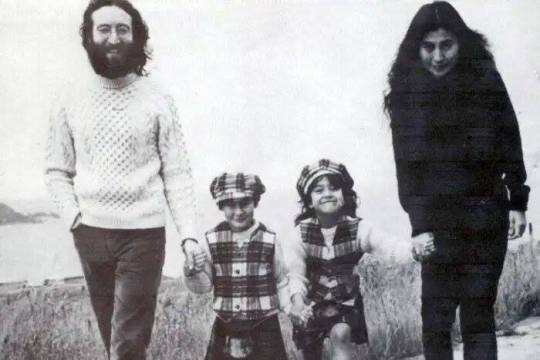
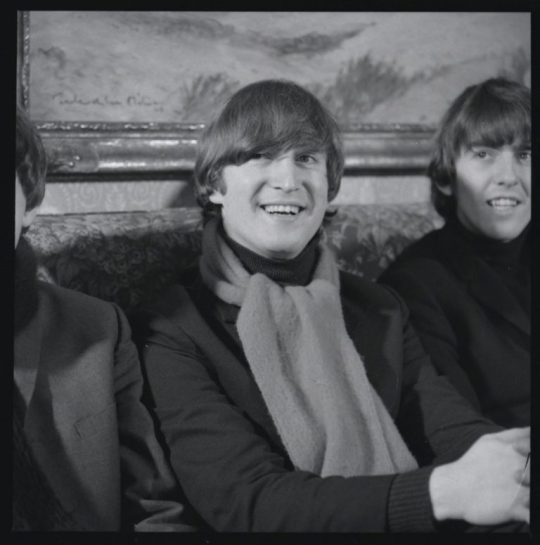
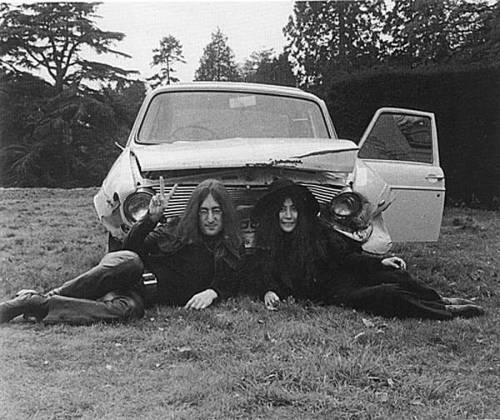
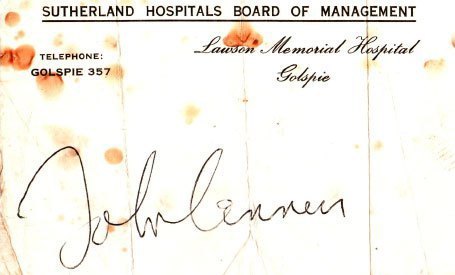

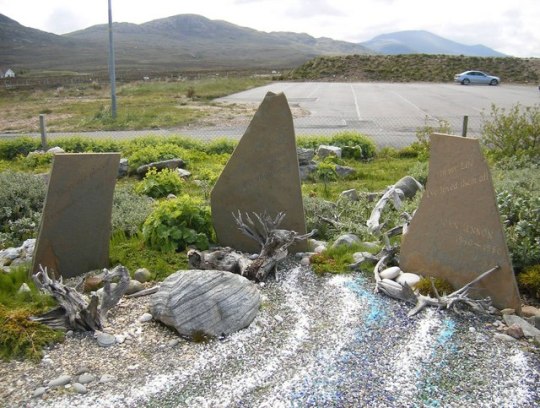

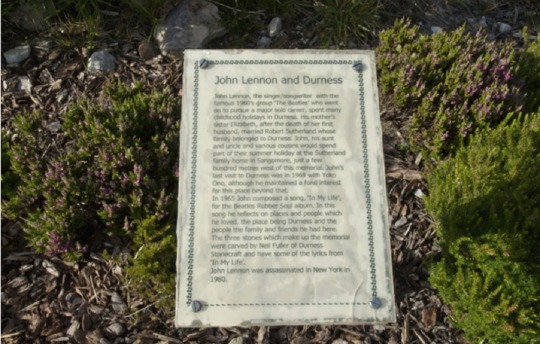
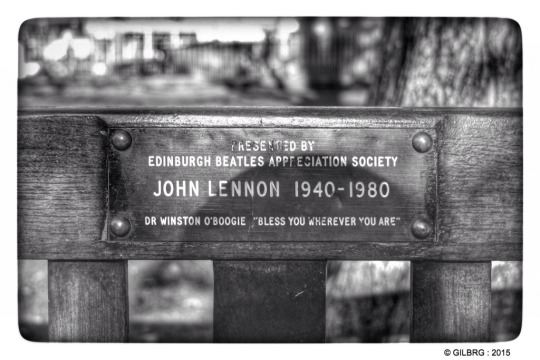
On December 8th 1980, John Lennon was gunned down and killed in New York.
Over the years it is Paul McCartney who is the Beatle most connected with Scotland, but John Lennon has links with our country going back to his childhood.
The ex-Beatle was a regular visitor to Durness in Sutherland during his younger years after his dear Aunt Mater remarried a dentist called Bert who owned a home that overlooked Sango Bay. John, who travelled north with his cousin Stanley Parks, who lived in Edinburgh and later in Largs, would head to the coast for weeks on end, often being dragged into helping his uncle fix up the house.
“The family party roughed it in a primitive farmhouse lit by oil lamp and candles and noisy with the screeches of Mater’s pet parrot,” wrote Philip Norman in his biography John Lennon: The Life.
The house where Lennon holidayed at Sangomore, a settlement at Durness, was demolished just a few years ago with a new property built by the owners.
Parkes also recalled:
John never forgot those times at Durness. They were among his happiest memories. He loved the wilderness. John was nine when he started coming up with my family to the croft in Durness. The croft belonged to my stepfather, Robert Sutherland, and John just loved the wildness and the openness of the place. We went fishing and hunting and John loved going up into the hills to draw or write poetry. John really loved hill walking, shooting and fishing. He used to catch salmon. He would have been quite a laird. In the last letter to me before he was killed he quoted a famous Scottish saying that says ‘It’s a braw, bricht moonlicht nicht since I last had a word’.
John later took his to Scotland, but his visit was tainted by an accident he had in his Austin Maxi car.
He, Ono and Kyoko sustained cuts to the face and Ono’s back was injured.They were taken to Golspie’s Lawson Memorial Hospital where Lennon was given facial stitches, Ono 14 in her forehead, and Kyoko four. Julian Lennon was treated for shock but was otherwise unhurt. He was taken to stay with Lennon’s Aunt Mater in Durness, around 50 miles away, before his mother Cynthia took him back to London the following day.When she arrived at the hospital to demand an explanation from Lennon he refused to see her.Lennon remained in hospital for five days and famously told reporters:
“If you’re going to have a car crash, try to arrange for it to happen in the Highlands.“The hospital there was just great.”
Lennon was never a confident driver and gave up driving after the accident, hiring a chauffeur to take him wherever he needed to go and reportedly having the old car’s carcass mounted on a pillar at his English estate.
This 1969 crash wasn’t John’s first brush with danger on Scottish roads; Ken McNab, author of The Beatles in Scotland, revealed that the Beatles had an accident during their first tour in 1960, when they were backing up singer Johnny Gentle as the Silver Beetles.
As McNab put it, “John Lennon began the ’60s with a car crash in Scotland and managed to end the decade with another car crash in Scotland.”
There is a wee memorial garden to Lennon’s memory in Durness, other memorials in the country include a bench in Edinburgh’s Princes Street Gardens and a plaque in Durness.
35 notes
·
View notes
Text
„Ty i Mount Everest macie coś wspólnego. Tylko, że ono zamroziło około 200 serc, a tobie udało się tylko jedno.”
#cytat o milosci#cytat o życiu#smutny cytat#brak miłości#cytatowo#mój cytat#polski cytat#cytaty#blog z cytatami#cytat o ludziach
13 notes
·
View notes
Text
A man desparate for an escape route PH
Daily Telegraphhttps://www.telegraph.co.uk/news/2023/04/14/prince-harry-looks-like-a-man-desperate-for-an-escape-route/history←priornext→14 Apr 2023 17:03:28 Prince Harry looks like a man desperate for an escape route – we should give him oneHe returns to Britain again next month. It’s an opportunity to show that, despite the trouble he’s caused, this is still the Duke’s countryCAMILLA TOMINEYASSOCIATE EDITOR14 April 2023 • 5:11pmCamilla TomineyPrince Harry, Duke of Sussex departs after attending the Royal Courts of JusticeMuch is being made of the Duchess of Sussex’s newfound inconspicuousness. It wasn’t long ago that there was no escaping the American former actress turned wannabe People’s Princess as she revealed her “truth” on Oprah, shed tears on Netflix, and shared pearls of wisdom on her “Archetypes” podcast. “I’m particular,” admitted the woman once dubbed “Duchess Difficult” by palace staff, insisting that setting boundaries did not make her demanding.But having been completely absent from the promotional activity around Spare – her husband’s warts-and-all autobiography – and now having decided against attending the Coronation, preferring instead to remain in California, “Duchess Dolittle” would appear to be a better moniker.Biding her time since that South Park episode, there is mounting talk of a rebrand, with Meghan reportedly planning to revive her lifestyle blog The Tig. Think Martha Stewart meets Kim Kardashian, presumably with enough paid endorsements to fund the couple’s quest to maintain “financial independence” from the Crown, and possibly to get a new kitchen.But as the mistress of reinvention works on Megxit: The Sequel, what is the Duke of Sussex to do? The John Lennon to his wife’s Yoko Ono (or, as someone once joked on Twitter, Woko Ono), things aren’t quite as straightforward for a fifth-in-line to the throne, for whom Britain appears to be the third person in his marriage.Like his relationship with the royals, Prince Harry’s connection with his country of birth is complicated. “I love my mother country and I love my family and I always will,” he writes in his book. “I just wish, in the second-darkest moment of my life, they’d both been there for me.”Yet in making a surprise return to London for his High Court case against Associated Newspapers Ltd, and in agreeing to attend the Coronation on May 6, Harry looks like a man with a yearning for Blighty. And if that’s the case – if he does want to come back, at least for a temporary period – shouldn’t he be welcomed, not only by the palace but the public, too?The truth is that Harry will always seem more at home here than in the United States (even after his imminent eviction from Frogmore House). In America, he’s just, as the South Park creators rather cruelly put it, a “dumb prince”.The Sussexes aren’t major influencers there. That job is left to people such as the less middle-aged Selena Gomez and Kylie Jenner. The Duke and Duchess are just another pair of celebrities in a country where they are two-a-penny.Any American dream that Harry might have had appears to have gone a bit stale, with the Netflix glow fading much quicker than he may have hoped. His memoir is still among those topping the charts, but that caused a stir because of what it said about the Royal family as a whole, not just him.In Britain, by contrast, Prince Harry will always be someone. He’s the son of the King, the brother of a future king and the uncle of a future king. And although he may have done his best to destroy these familial ties, they still mean something over here. That’s why Britons have been so reluctant to write him off completely. Positive memories linger of the lad who was a good laugh before he completely fell under his wife’s spell.Indeed, people seem generally pleased he has chosen to support his father on the biggest day of his life – and they will be largely delighted that Meghan won’t be making another appearance in Westminster Abbey. The King loves his “darling boy”. The family knows Harry’s presence at the service will bring Charles joy – and that it’s good for the monarchy.Deep down, I suspect many people hope that Harry, Charles and William will resolve their differences this time. Life is too short for any family to go on like this, be they populated with princes or paupers. It’s reasonable to wonder, too, if Harry can make Britain a home again. Despite his recent penchant for spewing American psychobabble and his insistence that he is loving the LA lifestyle, it does look like he is lost in the States.The cynics would say that even before he met Meghan, Harry was not fond of this green and pleasant land. In 2008, when he was serving his first tour of Afghanistan, the Duke was asked if he would ever return to the warzone. “I don’t want to sit around in Windsor,” he replied. “But I generally don’t like England that much and, you know, it’s nice to be away from all the press and the papers and all the general sh— that they write.”But now that he is sitting around in Santa Barbara – with the press continuing to write about him back home – has he really achieved peace?It always struck me that if there was one place Harry would yearn for outside of Britain, it would be Africa, not Los Angeles. As recently as 2019, he said: “I wish I could spend more time in Africa. I have this intense sense of complete relaxation and normality [there]. To not get recognised, to lose myself in the bush with what I would call the most down-to-earth people on the planet, people [dedicated to conservation] with no ulterior motives, no agendas, who would sacrifice everything for the betterment of nature … I talk to them about their jobs, about what they do.”You get the sense that Harry has always pined for a real sense of belonging: not just to be loved but to be familiar.I previously mentioned Afghanistan because this week we were once again reminded of how the military always brought out the best in the Duke. Responding to the death of Help for Heroes founder Bryn Parry, who made a life-changing difference to military veterans and their families, Prince Harry paid a heartfelt tribute, saying: “We bid farewell to a man who, alongside his wife, completely transformed the UK charity sector for the benefit of those who have served. His vision, determination and brilliance provided a lifeline for thousands of veterans, as well as their families, when they needed it most.”The saddest aspect of all this is how low Harry, a former British Army officer, has fallen in the estimation of his fellow troops, who once admired his determination and brilliance. It is now unlikely he will even wear a military uniform to the Coronation despite all he has achieved with the Invictus Games.The man who was once “our Harry” needs a purpose in life beyond attacking the media and his family. By giving him a warm welcome in three weeks’ time, Britain might help him find it
Thank you 🐼
7 notes
·
View notes
Text
best and most memorable books read in 2022 (favourites bolded) :-) mostly scifi, slice of life and fantasy and can recommend each and every one wholeheartedly + 52 outstanding books out of the 101 i read the whole year is not such a bad ratio! :-)
exhalation, the vegetarian, untold night and day, project hail mary, a wizard of earthsea, strange weather in tokyo, no one writes back, kim jiyoung born 1982, the housekeeper and the professor, piranesi, jean anoilh's antigone, annihilation, tokyo ueno station, invisible planets, goodbye tsugumi, letters to véra, if cats disappeared from the world, almond, the nakano gift shop, sweet bean paste, the three body problem / the dark forest / death's end, lonely castle in the mirror, the employees, vesper flights, klara and the sun, all the lovers in the night, before the coffee gets cold, stories of your life and others, the dispossessed, foundation, there's no such thing as an easy job, the odyssey (translated by emily wilson), dune messiah, assassin's apprentice, pachinko, the tombs of atuan, the farthest shore, if beale street could talk, the once and future king, the haunting of hill house, frankenstein, rebecca, rendezvous with rama, dracula, the library at mount char, the ink dark moon: love poems by ono no komachi and izumi shikibu, crying in h mart, a winter book, the snow child, changing planes, south of the border west of the sun, a clash of kings
13 notes
·
View notes
Photo
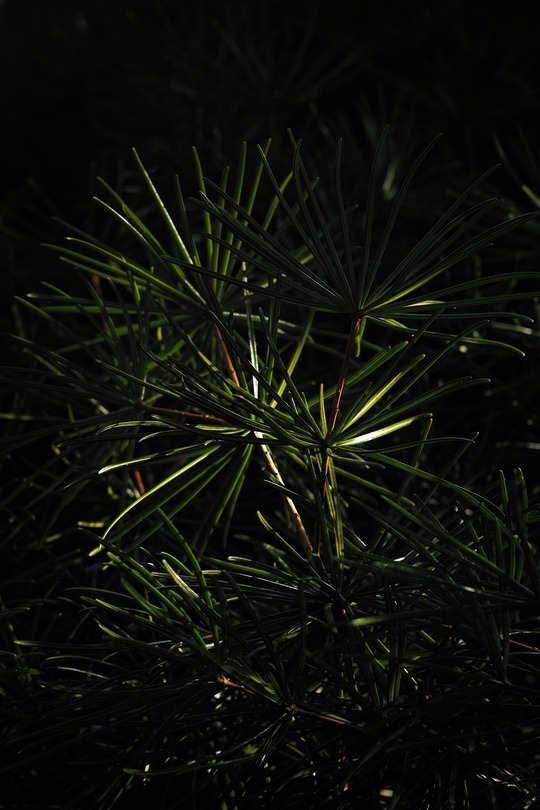
高野槙[Kōyamaki]
Sciadopitys verticillata
高野[Kōya] : 高野山[Kōyasan], Mount Kōya
槙[Maki] : Podocarpus macrophyllus
It was so named because the one in Kōyasan, which was particularly famous. It is one of 高野六木[Kōya rikuboku] and one of 木曾五木[Kiso goboku].
高野六木
The six kinds of trees controlled to preserve architectures related to temples of Kōyasan in the late Edo period.
高野槙
檜[Hinoki] : Chamaecyparis obtusa
杉[Sugi] : Cryptomeria japonica
赤松[Akamatsu] : Pinus densiflora
樅[Momi] : Abies firma
栂[Tsuga] : Tsuga sieboldii
木曾五木
The five kinds of trees that had been controlled by the domain of Owari and the government from the Edo period to the Meiji period.
高野槙
檜
黒檜|𣜌[Kurobe] : Thuja standishii
檜葉[Hiba] : 翌檜[Asunaro], Thujopsis dolabrata var. dolabrata
椹[Sawara] : Chamaecyparis pisifera
Legend has it that Ono-no Takamura often went back and forth between this world and the underworld through the branches of this tree.
https://en.wikipedia.org/wiki/Ono_no_Takamura
12 notes
·
View notes
Photo


Laff-a-Lympics Issue #1 “The Meet at Mount Ono”
9 notes
·
View notes
Photo

Katsushika Hokusai, The New Fields at Ono in Suruga Province, from the series Thirty-six views of Mount Fuji - Ukiyo-e
5 notes
·
View notes
Text
ANIME RECAP: FESTA DEL PAPÀ EDITION
Con tutti questi annunci e trailer, cosa è rimasto per l'AnimeJapan?!

Ho iniziato a raccogliere le varie news venerdì pomeriggio. Ogni volta che pensavo di aver finito, usciva qualcosa di nuovo. Ancora e ancora, non sto scherzando! A più riprese ero lì, che mi guardavo attorno, in cerca di qualche telecamera nascosta 🤨 Ho letteralmente esaurito il numero di embed per i video che mi consente Tumblr, senza andare a scomodare l'editor html!
Considerato che la prossima settimana si tiene la nuova edizione dell'AnimeJapan, ci sono veramente tanti annunci dei quali parlare e una serie pressoché infinita di trailer. Quindi bando le ciance, buon ANIME RECAP e visto che ci siamo, auguri a tutti i papà!
VIDEO
🔶🔸RANKING OF KINGS: TREASURE CHEST OF COURAGE

Non si sa ancora quanti episodi saranno, ma il sito ufficiale ci comunica che lo special televisivo andrà in onda settimanalmente a partire dal 13 aprile.
youtube
La prima stagione della serie animata è già disponibile in streaming su Crunchyroll, sia sottotitolata che doppiata in italiano.
🔶🔸MASHLE: MAGIC AND MUSCLES
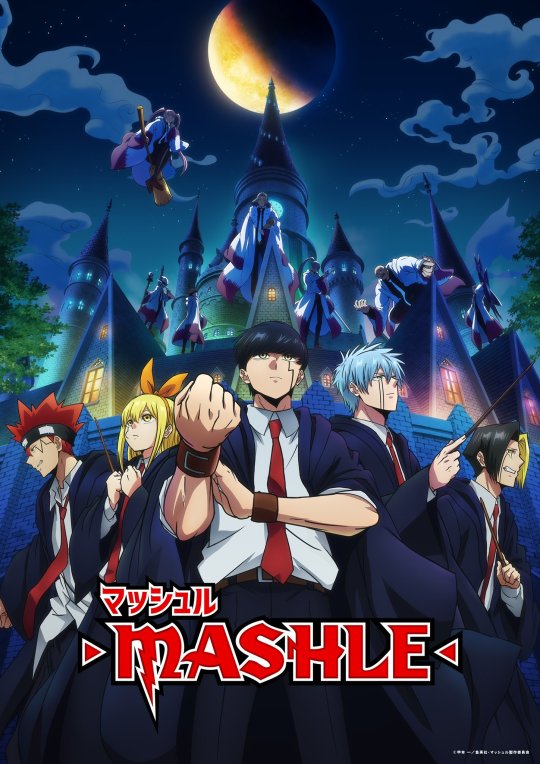
La school action fantasy comedy, tratta dal popolare manga di Hajime Koumoto, arriverà in simulcast su Crunchyroll dal 7 aprile.
youtube
La serie è diretta da Tomoya Tanaka (Engage Kiss, Visual Prison) e prodotta presso A-1 PICTURES.
🔶🔸STORY OF A SMALL SENIOR IN MY COMPANY

L'anime dell’office romantic comedy firmata da Saisou, arriverà a cominciare da luglio.
youtube
L'adattamento è diretto da Mitsutoshi Sato (Ikki Tousen: Western Wolves, Bakumatsu Crisis) e in lavorazione presso PROJECT No.9.
🔶🔸DEAD MOUNT DEATH PLAY

L’action a tinte soprannaturali, ispirato all'omonimo manga scritto da Ryohgo Narita (Durarara!!, Baccano!, Fate/Strange Fake) e illustrato da Shinta Fujimoto (Red Raven), arriverà su Crunchyroll dal 10 aprile.
La serie sarà divisa in due parti, con la seconda programmata per ottobre.
youtube
L’adattamento è diretto da Manabu Ono (Sword Art Online: Alicization, Sakura Wars the Animation), presso lo studio GEEK TOYS.
🔶🔸THE VEXATIONS OF A SHUT-IN VAMPIRE PRINCESS
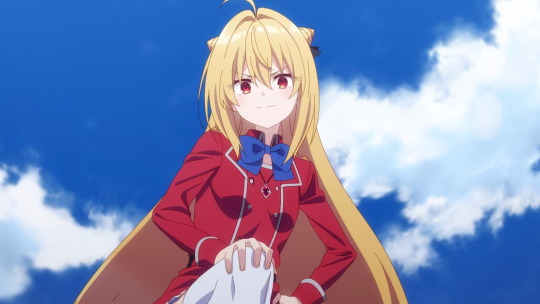
L'action fantasy comedy (con un pizzico di juicy yuri che non fa mai male 👀) debutterà in Giappone a ottobre.
youtube
La serie animata si basa sulla light novel firmata da Kotei Kobayashi. La regia è affidata a Tatsuma Minamikawa (Nami yo Kiitekure, Fire Force - Stagione 2) e il progetto è targato PROJECT No.9.
🔶🔸KUMA KUMA KUMA BEAR PUNCH!

La seconda stagione della commedia isekai, tratta dalla light novel di Kumano, comincerà dal 3 aprile.
youtube
Lo staff è lo stesso della prima stagione, andata in onda due anni fa. A dirigere l'adattamento presso EMT Squared ci sono sempre Yuu Nobuta (The Faraway Paladin, High School Fleet) e Hisashi Ishii (I’m Quitting Heroing).
🔶🔸HIGHSPEED ETOILE
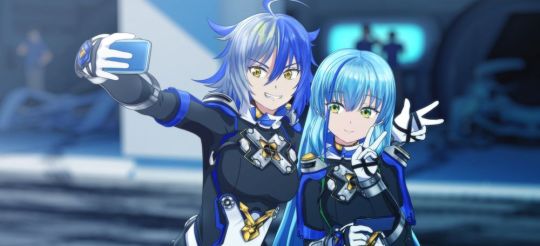
Nessuna novità riguardo allo staff, ma in questo primo teaser le waifu ci sono eccome!
youtube
Il character design è quello riconoscibile di Takuya Fujima (Magical Girl Lyrical Nanoha ViVid, Warlords of Sigrdrifa). La serie farà il suo debutto in tv nel corso del 2024.
ANNUNCI
🔶🔸ATELIER RYZA: EVERR DARKNESS & THE SECRET HIDEOUT

Il fantasy rpg di Koei Tecmo ispirerà una serie animata, che arriverà già questa estate!
L'adattamento è in cantiere presso LIDENFILMS (Call of the Night, La mia maestra non mostra la coda) e vede il debutto ala regia di Emma Yuzuriha.
🔶🔸ALYA SOMETIMES HIDES HER FEELINGS IN RUSSIAN

La commedia romantica firmata da Sunsunsun ispirerà una serie animata. L'annuncio non ha svelato quando arriverà e chi si sta occupando della trasposizione della novel (della quale esiste anche una versine manga volendo).
youtube
Per le voci dei due protagonisti sono, però, già confermati Kohei Amasaki (Otto in Re:ZERO -Starting Life in Another World-) e Sumire Uesaka (Hayase Nagatoro in Don't Toy with Me, Miss Nagatoro), rispettivamente i doppiatori di Masachika Kuze e Alisa Mikhailovna Kujo.
🔶🔸THE FIRE HUNTER

La serie tornerà prossimamente con una seconda stagione. I primi 10 episodi del fantasy post-apocalittico, tratto dalla serie di romanzi di Rieko Hinata, sono in streaming su Crunchyroll.
L'anime è diretto da Junji Nishimura (Ranma ½, ViVid Strike!, True Tears, Vlad Love), mentre il grande Mamoru Oshii (Ghost in the Shell, The Sky Crawlers, Jin-Roh - Uomini e lupi, Lamù - Beautiful Dreamer, Vlad Love, Tenshi no Tamago) si sta occupando della sceneggiatura.
🔶🔸THE ELUSIVE SAMURAI

Il nuovo manga di Yusei Matsui verrà adattato in una serie animata da CLOVERWORKS (Bocchi the Rock!, My Dress-Up Darling), dietro alla direzione del debuttante Yuta Yamazaki.
L'avventura storica dell'autore di ASSASSINATION CLASSROOM è edita qua in Italia da Panini Comics, sotto l'etichetta Planet Manga.
🔶🔸3-Z CLASS GINPACHI SENSEI
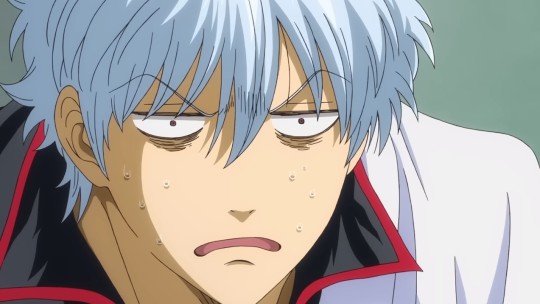
Pensavate davvero di aver salutato Gintama una volta per tutte? il Professor Ginpachi è qui per smentirvi.
youtube
La novel spin-off, scritta da Tomohito Osaki, ispirerà prossimamente un anime vero e proprio.
🔶🔸THE iDOLM@STER SHINY COLORS

Il franchise torna prepotentemente in tv con un'altra nuova serie. Dopo THE iDOLM@STER CINDERELLA GIRLS: U149 e THE iDOLM@STER MILLION LIVE, in arrivo rispettivamente dal 5 aprile e da ottobre, adattamento confermato anche per il browser game SHINY COLORS.
La serie di 12 episodi verrà trasmessa durante la stagione primaverile 2024, ma passerà in anteprima nei cinema divisa in tre appuntamenti, il prio dei quali è fissato per il 27 ottobre.
Realizzata presso POLYGON PICTURES, a dirigerla troviamo Mankyu (The Idolm@ster Cinderella Girls Theater, The Ice Guy and His Cool Female Colleague).
🔶🔸KINNIKUMAN

Nuovo anime in arrivo per festeggiare il 40° anniversario della storico wrestler, la cui prima serie animata è andata in onda negli anni '80.
Nel 2011, il duo Yudetamago ha ripreso in mano la storia del manga, che si era fermata nell'ormai lontano 1987, pubblicando i nuovi capitoli gratuitamente online.
🔶🔸ISHURA

La serie action fantasy, basata sull'omonima light novel di Keiso, verrà distribuita globalmente in streaming su Disney+.
DATE
🔶🔸WHISPER ME A LOVE SONG
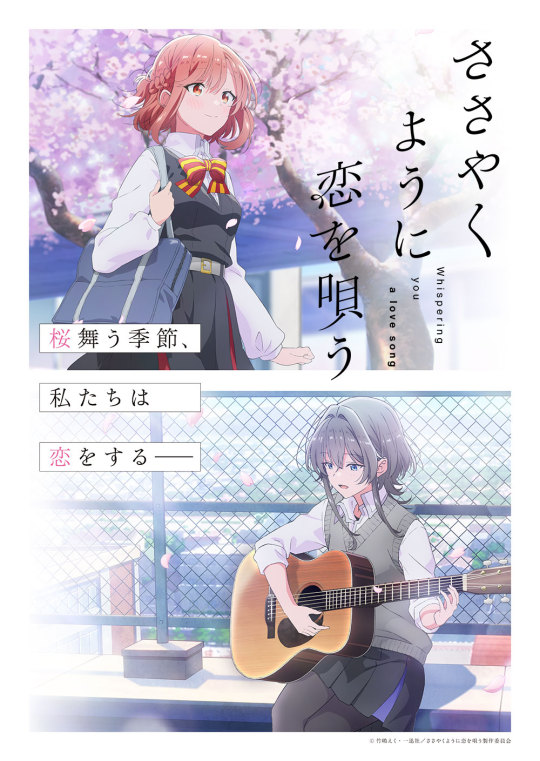
La serie animata ispirata al girls love manga di Eku Takeshima, che possiamo trovare sui nostri scaffali grazie a Star Comics, verrà trasmessa a partire da gennaio 2024.
L'adattamento segnerà il debutto alla regia di Xinya Cai, che sta preparando il tutto presso lo studio CLOUD HEARTS (The Iceblade Sorcerer Shall Rule the World, Seija Muso).
* NON VUOI PERDERTI NEANCHE UN POST? ENTRA NEL CANALE TELEGRAM! *

Autore: SilenziO))) Se usate Twitter, mi trovate lì!
blogger // anime enthusiast // twitch addict // unorthodox blackster - synthwave lover // penniless gamer // INFJ-T magus
#sasakoi#whisper me a love song#ishura#kinnikuman#alya#hikikomari#highspeed etoile#mashle#chiisai senpai#dead mount death play#kuma kuma kuma bear#crunchyroll#disney+#disney plus#anime recap#anime#news in the shell#roshidere#atelier ryza#the idolmaster#the elusive samurai
5 notes
·
View notes
Text
Yoko Ono’s Art of Defiance

At the center of the downtown arts scene, Ono explored the idea of “fabricated truth.”Photograph by Clay Perry / England & Co.
Before she met John Lennon, she was a significant figure in avant-garde circles and had created a masterpiece of conceptual art. Did celebrity deprive her of her due as an artist?
By Louis Menand
June 13, 2022
On March 9, 1945, an armada of more than three hundred B-29s flew fifteen hundred miles across the Pacific to attack Tokyo from the air. The planes carried incendiary bombs to be dropped at low altitudes. Beginning shortly after midnight, sixteen hundred and sixty-five tons of bombs fell on the city.
Most of the buildings in Tokyo were constructed of wood, paper, and bamboo, and parts of the city were incinerated in a matter of hours. The planes targeted workers’ homes in the downtown area, with the goal of crippling Japan’s arms industry. It is estimated that a million people were left homeless and that as many as a hundred thousand were killed—more than had died in the notorious firebombing of Dresden, a month earlier, and more than would die in Nagasaki, five months later. Crewmen in the last planes in the formation said that they could smell burning flesh as they flew over Tokyo at five thousand feet.
That night, Yoko Ono was in bed with a fever. While her mother and her little brother, Keisuke, spent the night in a bomb shelter under the garden of their house, she stayed in her room. She could see the city burning from her window. She had just turned twelve and had led a protected and privileged life. She was too innocent to be frightened.
The Ono family was wealthy. They had some thirty servants, and they lived in the Azabu district, near the Imperial Palace, away from the bombing. The fires did not reach them. But Ono’s mother, worried that there would be more attacks (there were), decided to evacuate to a farming village well outside the city.
In the countryside, the family found itself in a situation faced by many Japanese: they were desperate for food. The children traded their possessions to get something to eat, and sometimes they went hungry. Ono later said that she and Keisuke would lie on their backs looking at the sky through an opening in the roof of the house where they lived. She would ask him what kind of dinner he wanted, and then tell him to imagine it in his mind. This seemed to make him happier. She later called it “maybe my first piece of art.”
Like any artist, Ono wanted recognition, but she was never driven by a desire for wealth and fame. Whether she sought them or not, though, she has both. Her art is exhibited around the world: last year at the Serpentine, in London (“Yoko Ono: I Love You Earth”); this year at the Vancouver Art Gallery (“Growing Freedom”) and the Kunsthaus in Zurich (“Yoko Ono: This Room Moves at the Same Speed as the Clouds”). She began managing the family finances after she and her husband John Lennon moved to New York, in 1971, and she is said to be worth hundreds of millions of dollars today.
There is no question that museums and galleries mount these shows and people go to see them because Ono was once married to a Beatle. On a weekday not long ago, I saw the Vancouver show, which occupied the whole ground floor of the museum, and there was a steady stream of visitors. None of the artists and composers Ono was associated with in the years before she married Lennon enjoys that kind of exposure today.
Ono may have leveraged her celebrity—but so what? She never compromised her art. The public perception of her as a woman devoted to the memory of her dead husband has made her an icon among the kind of people who once regarded her as a Beatles-busting succubus. Yet the much smaller group of people who know about her as an artist, a musician, and an activist appreciate her integrity. No matter what you think of the strength of the art, you can admire the strength of the person who made it.
The most recent Ono biography is “Yoko Ono: An Artful Life,” by Donald Brackett, a Canadian art and music critic. He didn’t talk to Ono, and there’s not much in the way of new reporting in his book. The result feels somewhat under-researched. He dates the great Tokyo air raid to 1944, for example, and he gives the impression that Ono spent the night in the bunker with her family. Still, he is an enthusiastic writer, sympathetic to his subject (not so much to Lennon), and alive to the attractions of an unusual person and an unusual life.
Ono has talked about her parents as being emotionally distant. Her mother was a Yasuda, a member of the family that founded the Yasuda Bank, later Fuji Bank, and that owned one of the four largest financial conglomerates in Japan. Ono’s father worked at the Yokohama Specie Bank, which became the Bank of Tokyo after the war, and was frequently posted to foreign branches. He was in San Francisco when Yoko was born; she did not lay eyes on him until she was three. When Tokyo was firebombed in 1945, he was in Hanoi.
Ono received an exceptional education. Beginning when she was very young, she was tutored in Christianity (her father was a Christian; there were not many in Japan), Buddhism, and piano. She attended a school known for its music instruction; she was once asked to render everyday sounds and noises, such as birdsongs, in musical notation. After the war, she attended an exclusive prep school; two of the emperor’s sons were her schoolmates. And when she graduated she was admitted to Gakushuin University as its first female student in philosophy.
She left after two semesters. She said the university made her feel “like a domesticated animal being fed information.” This proved to be a lifelong allergy to anything organized or institutional. “I don’t believe in collectivism in art nor in having one direction in anything,” she later wrote. A classmate offered a different perspective: “She never felt happy unless she was treated like a queen.”
Ono may also have dropped out because her parents had moved to Scarsdale when her father’s bank posted him to the New York City branch. Ono soon joined them, and, in 1953, entered Sarah Lawrence, in Bronxville, less than half an hour away. Sarah Lawrence was an all-women’s college at that time and highly progressive, with no requirements and no grades. Ono took classes in music and the arts, but she seems not to have fitted in. A teacher remembered her as “tightly put together and intent on doing well. The other students were more relaxed. She wasn’t relaxed, ever.”
As non-prescriptive as it was, Sarah Lawrence triggered her allergy. It was “like an establishment I had to argue with and I couldn’t cope with it,” she complained. She now decided that she needed to get away from her family. “The pressure of becoming a Yasuda / Ono was so tremendous,” she said later. “Unless I rebelled against it, I wouldn’t have survived.” Somewhere (stories differ) she met Toshi Ichiyanagi, a student at Juilliard, and in 1956 she dropped out of college, got married (her parents weren’t thrilled), and moved to Manhattan. She began supporting herself with odd jobs. She lived in the city for most of the next ten years.
Not long before leaving Sarah Lawrence, Ono published in a campus newspaper a short story called “Of a Grapefruit in the World of Park.” It’s about some young people trying to decide what to do with a grapefruit left over from a picnic. The allegory is a little mysterious, but it’s clear what the grapefruit represents. The grapefruit is a hybrid, and so is Yoko Ono.
It’s easy to feel that there is an amateurish, “anyone can do this” quality to her art and her music. The critic Lester Bangs once complained that Ono “couldn’t carry a tune in a briefcase.” But the look is deliberate. It’s not that she wasn’t well trained. She learned composition and harmony when she was little, and she could write and read music, which none of the Beatles could do. At Sarah Lawrence, she spent time in the music library listening to twelve-tone composers like Arnold Schoenberg.
She grew up bilingual and was trained in two cultural traditions. She went to secondary school and college in Japan in a period of what has been called “horizontal Westernization,” when artistic and intellectual life was rapidly liberalized as the nation tried to exorcise its militarist and ultranationalist past. Ono and her friends read German, French, and Russian literature in Japanese translation, and the young philosophers they knew were obsessed with existentialism. She also knew Japanese culture. One of the ways she supported herself in New York was by teaching Japanese folk songs and calligraphy. She knew waka and Kabuki. She was therefore ideally prepared to enter the New York avant-garde of the nineteen-fifties, because that world was already hybrid. Its inspirations were a French artist, Marcel Duchamp, and an Eastern religion, Zen Buddhism.
The personification of those enthusiasms was the composer John Cage—a student of Schoenberg, a devotee of Eastern thought, and an idolater of Duchamp. Ono got to know Cage through her husband, who took an evening class that Cage taught at the New School. Although Ono didn’t take the class, artists who would be part of her circle did, the best known of whom was Allan Kaprow, the creator of the Happening.
Cage didn’t expect his students to imitate his own work. He said that one of the most important things he learned from teaching the class was something Ichiyanagi had said to him in response to a suggestion: “I am not you.” But he encouraged experimentation.
And the students duly experimented. A representative piece for the class is “Candle-Piece for Radios,” by George Brecht. Radios are placed around a room in the ratio of one and a half radios per performer. At each radio is a stack of cards with instructions printed on them, such as “volume up,” “volume down,” and “R” or “L,” denoting the direction the radio dial is to be turned. Each performer is given a lit birthday candle, and, on a signal, begins going through the decks, card by card, using any available radio. The piece ends when the last candle goes out.
This is how Happenings work. They are not “anything goes” performances; most Happenings (there are some exceptions) have a script, called an “event score.” Each participant follows specific instructions about what actions to perform and when.
In 1960, Ono found a loft at 112 Chambers Street and rented it for fifty dollars and fifty cents a month. It was a fourth-floor walkup, without heat or electricity, and the windows were so coated with grime that little light got in, though there was a skylight. The furnishings consisted mostly of orange crates and a piano. Ono turned this into a combination living and performance space. Together with La Monte Young, a composer and musician (he was a developer of the drone sound used by the Velvet Underground on some of their songs), she organized a series of concerts and performances. From December, 1960, to June, 1961, eleven artists and musicians performed in the loft, usually for two nights each. Ono said that these concerts were sometimes attended by two hundred people. Cage came, and so did Duchamp. Suddenly, she was at the center of the downtown arts scene.
At some sessions, Ono herself “performed” art works. One consisted of mounting a piece of paper on the wall, opening the refrigerator and taking out food, such as Jell-O, and throwing it against the paper. At the end, she set the paper on fire. (Cage had advised her to treat the paper with fire retardant first so that the building would not burn down.) The art work consumes itself.
The New York art world of 1960, even in its most radical downtown incarnation, was male-dominated. Of the eleven artists who headlined events in the Chambers Street series, only one was a woman. To Ono’s annoyance, Young was credited as the organizer and director of the series. She was identified as the woman whose loft it was.
She was even more annoyed when she learned that a man who had attended some of the concerts was planning to mount a copycat series in his uptown art gallery. The gallery, on Madison Avenue, was called the AG Gallery, and the man was George Maciunas.
Maciunas came to the United States from Lithuania in 1948, when he was a teen-ager, and spent eleven years studying art history. Then, around 1960, he set out to reinvent art by taking it off its pedestal. Duchamp and Cage were his great influences. (Maciunas is the subject of a compelling and entertaining documentary that resurrects the New York art underground of the nineteen-sixties, called “George: The Story of George Maciunas and Fluxus,” directed by Jeffrey Perkins.)
Ono was mollified when Maciunas offered her a show. He never had money. This did not prevent him from renting property, having a telephone, or anything else. He just didn’t pay his bills. By the time Ono’s show was mounted, in July, 1961, the gallery could be visited only in daylight hours, because the electricity had been turned off. Her show “Paintings and Drawings by Yoko Ono” was the gallery’s last.
Ono was present to guide visitors through the show, explaining how the pieces were supposed to work, because some of the art required the viewer’s participation—for example, “Painting to Be Stepped On,” a piece of canvas on the floor. That work, like a lot of Duchamp’s, might seem gimmicky. But, like Duchamp’s, there is something there to be unpacked. “Painting to Be Stepped On” resonates in two traditions. It alludes to the widely known photographs, published in the late nineteen-forties in Life and elsewhere, of Jackson Pollock making his drip paintings by moving around on a canvas spread on the floor. Those photographs, representing painting as performance, inspired artists (including Kaprow) for decades.
The second context, identified by the art historian Alexandra Munroe, is Japanese. In seventeenth-century Japan, Christians were persecuted, and one way to identify them was to ask them to step on images of Jesus and Mary. The procedure was called fumi-e—“stepping on.” People who refused could be tortured and sometimes executed. “Painting to Be Stepped On” is a grapefruit.
In the fall of 1961, Ono gave a concert in Carnegie Recital Hall, a venue that was adjacent to the main hall and that seated about three hundred. Maciunas, now a friend, helped design the show. According to the Times, the place was “packed.” But accounts are so various that it’s hard to tell, exactly, what happened.
Onstage, twenty artists and musicians performed different acts—eating, breaking dishes, throwing bits of newspaper. At designated intervals, a toilet was flushed offstage. A man was positioned at the back of the hall to give the audience a sense of foreboding. A huddle of men with tin cans tied to their legs attempted to cross the stage without making noise. The dancers Yvonne Rainer and Trisha Brown sat down and stood up repeatedly. According to the Village Voice, the performance finished with Ono’s amplified “sighs, breathing, gasping, retching, screaming—many tones of pain and pleasure mixed with a jibberish of foreign-sounding language that was no language at all.”
This was the kind of art that Maciunas had in mind. It used everyday materials. It had humor (the flushing toilet), meaning that it did not take itself too seriously. And it was anti-élitist. Anyone could do it. Around the time of Ono’s concert, Maciunas came up with a name for this kind of art: Fluxus. When he told Ono, she said it was a mistake to give the art a group name. That is how the Japanese art world worked; every artist was identified with a group. She didn’t want to belong to a group.
But Maciunas was an inveterate organizer—a problem, since he happened to be working with avant-garde artists, the kind of people who don’t like to be organized. For years, he tried to herd those cats. He opened FluxShop, where Fluxus art—mostly cheap plastic boxes filled with odds and ends—could be purchased. (Walk-in business was not brisk.) At one point, he made plans to buy an island and build a self-sufficient Fluxus community on it.
The island venture did not pan out, but Maciunas would finally realize his idea by buying and renovating abandoned buildings—more than twenty of them—in downtown Manhattan for artists to live and work in. The enterprise ruined him. He was sued by the tenants because the renovations were not up to code and the lofts could not pass inspection, and he was badly beaten by goons hired by one of his creditors. In the mid-seventies, he fled the city for a farm in Massachusetts, where he died, of cancer, in 1978. But he had given birth to SoHo. It would become, in the nineteen-eighties, the world capital of contemporary art.
Maciunas’s slogan for Fluxus was “Purge the world of ‘Europanism’!,” and at the Fluxus début, in West Germany in 1962, a grand piano was smashed to bits. Ono, who was invited but declined to attend, was not into breaking pianos. “I am not somebody who wants to burn ‘The Mona Lisa,’ ” she once said. “That’s the difference between some revolutionaries and me.” But she does share something with Maciunas. She is a utopian. She would be happy if the whole world could be a Fluxus island.
In 1962, Ono returned to Japan. She discovered that the Japanese avant-garde was even more radical than the New York avant-garde. There were many new schools. The most famous today is Gutai, which originated in Osaka in 1954. Like Fluxus, Gutai was a performative, low-tech, everyday-materials kind of art. One of the earliest Gutai works was “Challenging Mud,” in which the artist throws himself into an outdoor pit filled with wet clay and thrashes around for half an hour. When he emerges, the shape of the clay is presented as a work of art.
Ichiyanagi had returned earlier—the marriage was breaking up—and he arranged for Ono to present a concert at the Sogetsu Art Center, in Tokyo. Outside the hall, she mounted what she called “Instructions for Paintings,” twenty-two pieces of paper attached to the wall, each with a set of instructions in Japanese. The instructions resembled some of the art created by young artists in Cage’s circle in New York—for example, Emmett Williams’s “Voice Piece for La Monte Young” (1961), which reads, in its entirety, “Ask if La Monte Young is in the audience, then exit,” and Brecht’s “Word Event,” the complete score for which is the word “Exit.”
Inside the hall, with thirty artists, Ono performed several pieces, including some she had done at Carnegie Recital Hall. It’s unclear what the audience reaction was—Brackett says it was enthusiastic—but the show received a nasty review in a Japanese art magazine by an American expatriate, Donald Richie, who made fun of Ono for being “old-fashioned.” “All her ideas are borrowed from people in New York, particularly John Cage,” he wrote. This was not an attack from an uncomprehending traditionalist. This was an attack from the cultural left. Ono was traumatized. She checked into a sanitarium.
But when she came out, she picked up where she had left off. She got remarried, to Tony Cox, an American art promoter and countercultural type, and, in 1964, she published her first book, “Grapefruit,” a collection of event scores and instruction pieces:
sun piece
Watch the sun until it becomes square.
fly piece
Fly.
collecting piece ii
Break a contemporary museum into pieces with the means you have chosen. Collect the pieces and put them together again with glue.
These are like Brecht’s “Word Event,” but with a big difference. “Word Event” was intended to be performed, and artists found various ingenious ways to enact the instruction “Exit.” Ono’s pieces cannot be performed. They are instructions for imaginary acts.
In an essay in a Japanese art journal, she invoked the concept of “fabricated truth,” meaning that the stuff we make up in our heads (what we wish we could have for dinner) is as much our reality as the chair we are sitting in. “I think it is possible to see the chair as it is,” she explained. “But when you burn the chair, you suddenly realize that the chair in your mind did not burn or disappear.”
What Ono was doing was conceptual art. When conceptual artists hit the big time, at the end of the nineteen-sixties, her name was virtually never mentioned. She does not appear in the art critics Lucy Lippard and John Chandler’s landmark essay, “The Dematerialization of Art,” published in 1968. But she was one of the first artists to make it.
In 1965, she came back to New York, and, in March, had another show at Carnegie Recital Hall, “New Works of Yoko Ono.” This was the New York première of her best work, a truly great work of art, “Cut Piece.”
The performer (in this case, Ono) enters fully clothed and kneels in the center of the stage. Next to her is a large pair of scissors—fabric shears. The audience is invited to come onstage one at a time and cut off a piece of the artist’s clothing, which they may keep. According to instructions Ono later wrote, “Performer remains motionless throughout the piece. Piece ends at the performer’s option.” She said she wore her best clothes when she performed the work, even when she had little money and could not afford to have them ruined.
Ono had performed “Cut Piece” in Tokyo and in Kyoto, and there are photographs of those performances. The New York performance was filmed by the documentarians David and Albert Maysles. (Brackett, strangely, says that the Maysleses’ film, rather than a live performance, is what people saw at Carnegie Recital Hall.)
In most Happenings and event art, the performers are artists, or friends of the person who wrote the score. In “Cut Piece,” the performers are unknown to the artist. They can interpret the instructions in unpredictable ways. It’s like handing out loaded guns to a roomful of strangers. Ono is small (five-two); the shears are large and sharp. When audience members start slicing away the fabric around her breasts or near her crotch, there is a real sense of danger and violation. In Japan, one of the cutters stood behind her and held the shears above her head, as though he were going to impale her.
The score required Ono to remain expressionless, but in the film you can see apprehension in her eyes as audience members keep mounting the stage and standing over her wielding the scissors, looking for another place to cut. When her bra is cut, she covers her breasts with her hands—almost her only movement in the entire piece.
Most immediately, “Cut Piece” is a concrete enactment of the striptease that men are said to perform in their heads when they see an attractive woman. It weaponizes the male gaze. Women participate in the cutting, but that’s because it’s not just men who are part of the society that objectifies women. The piece is therefore classified as a work of feminist art (created at a time when almost no one was making feminist art), and it plainly is.
But what “Cut Piece” means depends in large part on the audience it is being performed for, and Ono originally had something else in mind. When she did the piece in Japan, a Buddhist interpretation was possible. It belonged to “the Zen tradition of doing the thing which is the most embarrassing for you to do and seeing what you come up with and how you deal with it,” she said.
The piece also derived, Ono said elsewhere, from a story about the Buddha giving away everything that people ask him for until he ultimately allows himself to be eaten by a tiger. Ono was offering everything she had to strangers—that’s why she always wore her best clothes. “Instead of giving the audience what the artist chooses to give,” as she put it, “the artist gives what the audience chooses to take.”
In 1966, Ono went to London to participate in the Destruction in Art Symposium, where she performed “Cut Piece” twice. It was not read as a Buddhist text at those events. Word of mouth after the first performance led to the second one being mobbed, with men eagerly cutting off all her clothing, even her underwear. This was Swinging London; everyone assumed that the piece was about sex. After London, Ono did not perform it again until 2003, when she did it in Paris, seated in a chair. This time, she explained that the work was about world peace, and a response to 9/11.
No matter where it is performed or what reading it suggests, the piece is an experiment in group psychology. People are being invited to do something publicly that is normally forbidden—violently remove the clothing of a woman they do not know. The ones who participate can rationalize their actions by telling themselves that stripping a passive woman is not “really” what they’re doing, because it’s a work of art. But, of course, it really is what they’re doing.
And people in the audience who don’t go onstage because they find the spectacle repellent or violative can tell themselves that at least they are not participating. In the film of the New York show, the last person recorded cutting is a young man with a bit of a swagger who lustily shears off all that was left of Ono’s top so that she has to cover her breasts. He is heckled. But no one stops him. For the hecklers are part of the show. And, of course, the more people who cut, the easier it is to become a cutter. It must be O.K. Everybody’s doing it.
The first time I saw the Maysles film was at the Vancouver show (although it is online), and that was when I understood what the New York performance was about. A beautifully dressed Japanese woman kneels, offering no resistance, while a series of armed white people methodically destroy all her possessions. What is being represented here? Hiroshima. Nagasaki. The firebombing of Tokyo.
Ono had planned to spend only a few weeks in London, but she found the city’s art world receptive to her work. Interest spilled over into the non-art world when she and Cox released a film entitled “Film No. 4,” commonly known as “Bottoms.” Which is all you see: closeups of naked people’s bottoms as they walk.

In the performance work “Cut Piece”—which Albert and David Maysles filmed in 1965—Ono invited audience members to shear off pieces of her clothing with a pair of scissors.Photograph © Yoko Ono
Ono and Cox had filmed a six-minute version of the movie in New York, using a high-speed camera loaned to them by Maciunas (who had it on loan from someone else). In London, many art-world celebrities eagerly agreed to perform in it, and the final cut is eighty minutes long, at approximately twenty seconds of screen time per bottom.
But no one knows you’re a celebrity from the rear. So the film is not just a joke. There’s an edge to it. It mocks self-importance. Ono described it as “like an aimless petition signed by people with their anuses.” The movie was promptly banned by the British Board of Film Censors—about the best publicity a filmmaker could hope for in sixties London. It got Ono into the tabloids. By then, though, she had met John Lennon.
Their story—and it could all be true, who knows?—is that on November 9, 1966, the day before a show of Ono’s work was scheduled to open at Indica Books and Gallery, Lennon dropped in. The Indica was a short-lived countercultural art gallery (indica is a species of cannabis) whose patrons included Paul McCartney. Ono accompanied Lennon while he browsed the art on display. (She has claimed not to have known who he was, which is not very believable. It is believable that she did not care who he was.) One work consisted of an apple on a pedestal. Lennon asked her what it cost. She said, Two hundred pounds. He picked up the apple and took a bite out of it. She thought that was gross.
Another piece was a ladder. When you climb up, there is a magnifying glass, which you use to look at a piece of paper on the ceiling, where you read a tiny word: “Yes.” This was totally up Lennon’s alley. “It’s a great relief when you get up the ladder and you look through the spyglass and it doesn’t say ‘No’ or ‘Fuck you,’ ” he explained later.
But they made their fateful connection with a piece called “Painting to Hammer a Nail In (No. 9).” Visitors are invited to hammer a nail into a board mounted on the wall. Lennon asked Ono if he could hammer a nail. Yes, she said, if he paid her five shillings. “Well, I’ll give you an imaginary five shillings,” he said, “and hammer an imaginary nail in.” “That’s when we locked eyes,” he said, “and she got it and I got it and, as they say in all the interviews we do, the rest is history.”
For a while, they were “just friends.” It helps to remember that this was still very early in the Beatles’ career, less than three years after the band played “The Ed Sullivan Show” for the first time. They had not yet recorded “Sgt. Pepper.” Lennon had just turned twenty-six. Ono, on the other hand, was thirty-three. Her work had fully matured. She gave Lennon a copy of “Grapefruit,” which he read with attention. The affair did not begin until May, 1968. They went public in June, and for the next twelve years, until Lennon was killed, they lived under the constant scrutiny of the world press (another context for “Cut Piece”). Brackett says that Lennon was the clingy one, not Ono. Lennon made her sit next to him when the Beatles were recording, because he was afraid that if she was out of his sight she would leave him.
The Times music critic Robert Palmer thought that “having John Lennon fall in love with her was the worst thing that could have happened to Yoko Ono’s career as an artist.” Ono herself admitted that “together we hurt each other’s career and position just by being with each other and just by being us.” How true is that?
The Vancouver show covered Ono’s career from 1954 to the present, and the visitor feels an abrupt shift after 1968. Starting with the Bed-ins for peace, where she and Lennon sat in hotel-room beds in their pajamas and discussed politics with journalists and various counterculture celebrities, such as Timothy Leary, a lot of her work has been about world peace. It has also become explicitly feminist. Maciunas had a politics, but most Fluxus art—and Cage’s and Duchamp’s art—is apolitical. It is art about art. After 1968, Ono’s art is about politics. But that is true of virtually every artist. With the war in Vietnam, art got politicized, and it remains politicized today.
Ono’s conception of the audience for her work changed, too. When Ono and Lennon married, she was a coterie artist and he was a popular entertainer—maybe the most famous in the world. She performed for hundreds; he performed for hundreds of millions. She decided that condescension to popular entertainment is a highbrow prejudice. As she put it, “I came to believe that avant-garde purity was just as stifling as just doing a rock beat over and over.” So she became a pop star. Including the records she made with Lennon, she has released twenty-two albums. She expanded her audience.
Her music hasn’t sold the way Beatles music has, of course. But she and Lennon did produce one spectacularly successful collaboration.
“Imagine” was the biggest hit of Lennon’s post-Beatles career. The song was recorded in 1971, and, over the years, it has become a kind of world anthem, covered by countless artists, and played in the opening ceremonies at the Olympics and in Times Square on New Year’s Eve. Pretty much everybody can hum the tune.
It’s easy to enjoy the song and embrace the sentiments but to think of it as expressing a kind of harmless flower-power utopianism. That’s a misapprehension. “Imagine” is utopian, but it is also a work of conceptual art. It’s an instruction piece. “Imagine it in your mind,” as she told her little brother, had—improbably, but that’s the way culture works—ricocheted across time and space to end up, twenty-six years later, in the words of a song heard by millions.
When the record was released, one of Ono’s instruction pieces from “Grapefruit” was printed on the back cover: “Imagine the clouds dripping. Dig a hole in your garden to put them in.” Later, Lennon said that it was sexist of him not to have listed Ono as a co-writer, given that the idea and much of the lyrics were hers. Somehow, though, he never did anything about it. But the world does go round, and in 2017 the National Music Publishers’ Association announced that, henceforth, Yoko Ono would be credited as a co-writer on “Imagine.” ♦
Published in the print edition of the June 20, 2022, issue, with the headline “The Grapefruit Artist.”
9 notes
·
View notes
Photo


I did it! \OvO/
No weapons or mounts to show for it tho. /OnO\
2 notes
·
View notes
Text
Arataki "The One and Oni" Itto (Outlaw Au)
Arataki Itto is a mountain of a man who towers over everybody like a giant redwood tree. His chosen mount is a bison named Ushi, for no usual horse can carry him, and he is often seen with his own cow herd of mismatched outcasts. He's an Oni from the state of Inazuma and a cowboy who works for Noctua Ranch. Despite not having the cunning mind or disposition for straight-up violence like some of his fellow gang members, Itto is a critical member of the Genshin Outlaws.
His skill? Universally beloved tits.
Yes, when Itto's diplomacy and cheerful disposition fails, he unbuttons his shirt to reveal a most deadly pair of tits. Once unleashed, everyone within a mile radius short circuits like a Sumeruian academic's first mechanism. Usually, after they all reboot, Itto can defuse the situation and get everyone back on track.
Whether he's running with the outlaws or in the town of Genshin as part of the rebuilding efforts, Itto is always a joy to have around and most helpful too. He's a skilled cow and child herder, an excellent laborer, and most importantly he's fantastic at getting everyone to wind down after a long day. Though he loves the Genshin Outlaws, Itto hopes that one day his entire found family can settle down happily in town. For him, that's a dream worth fighting for.
Backstory:
Itto was born into a somewhat hostile environment for the Oni clans. While they had initially lived peacefully with humanity, after discovering the Abyss and its monsters, people became wary of how the Oni's sharp features reminded them of said monsters. While there wasn't always outright hostility, many places treated the Oni warily and were quick to judge.
Arataki Itto was born to two parents who did not want him. As most abandoned children did, he ended up in an orphanage in Hanamizaka, Inazuma. Usually, he would've been kicked out by the time he was 14, if not earlier, because of Ono Aguri, or as people would call her, Granny Oni, Itto ended up helping the orphanage as a caretaker until he was 18. Though the children did not fear him, the adults did, so after Granny Oni died he was kicked out.
Fortunately, cow herding was not so different from child wrangling back at the orphanage, so Itto managed to get himself hired as a cow hand by a traveling group of cowboys who were headed out west. Though he was hired for his Oni intimidation and the assumption he'd be good at scaring off bandits, the cowboys took a liking to Itto and taught him everything they knew. Sadly once they arrived at their destination, the owner paid Itto and kicked him out.
For a few years Itto roamed from job to job. Sometimes he was a cowboy, other times he found odd jobs to keep afloat before he found a ranch or group willing to hire him for a while. Eventually, he began to collect cows that herds found undesirable. Akira, Genta, Mamoru, and Takuya were all unwanted like Itto was. It was only natural for him to want the best for him in return. Hell, Itto even collected a bison named Ushi, who to this day is the only steed strong enough to carry him.
One day, Itto was approached by the daughter of a clergyman. She wanted to pay him to take her to his next destination, a town miles away, because her family was going to send her away to a nunnery. Itto refused the money but agreed to take her with him anyways. Thus Kuki Shinobu became his companion.
The next destination became further and further away as both Shinobu and Itto bonded. Eventually they both gave up the pretense of the towns not being suitable for Shinobu and became traveling partners.
Itto got his geo vision while he was watching his small herd, dozing off under a nearby tree. It was when Shinobu yelled out to show him her progress with a lasso that he finally noticed his vision.
During their stay in Huntsville, Shinobu convinced Itto that they should try to get a job at a newly established ranch. Noctua Ranch was hiring and according to the townsfolk, the owner (who they all called the Colonel) was the only staff it had. After meeting the quiet and blunt "Colonel", all it took to get them hired was Shinobu's impressive skill set and Itto picking up a tree with his bare hands.
Noctua Ranch became home for Itto. His boss never judged him or feared him, Shinobu was content with helping run the Ranch, and the herd was happy in the fields. Everything was quaint and nice.
Then one day Huntsville was raided and the Genshin Outlaws showed up, and suddenly Noctua Ranch was a part-time outlaw campsite and Itto gained new friends.
Eventually Noctua Ranch was burned down and relocated to the town of Genshin.
When given the choice between staying in Genshin was only a cowboy or joining up with the Genshin Outlaws. Itto's answer was easy.
"Whaaat?! What kind of question is that! Of course I'm gonna help out, duh! Can't just let you guys do all the work out there —Oh, wha, huh?—Pssh, yeah I'm still gonna help back here too! But when you need me, you can count on Arataki "the one and Oni" Itto!"
2 notes
·
View notes